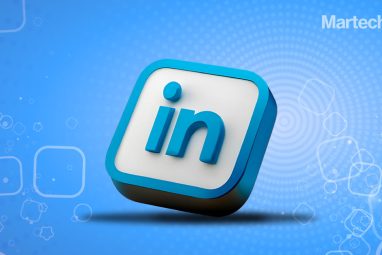How are Industry Leaders Reimagining Marketing in 2021?
How is Martech helping brands evolve the way they build relationships with customers? The answers are in our sneak peek of the Martechvibe-hosted CMO Think Tank in partnership with Oracle. Here is what we overheard in the boardroom… The global economy is slowly recovering. The World Economic Outlook report pegged 2020’s contractions at 3.3%. It is […]
Topics

How is Martech helping brands evolve the way they build relationships with customers? The answers are in our sneak peek of the Martechvibe-hosted CMO Think Tank in partnership with Oracle. Here is what we overheard in the boardroom…
The global economy is slowly recovering. The World Economic Outlook report pegged 2020’s contractions at 3.3%. It is estimated that 2021 will see a 6% growth rate globally.
For marketers, the economic slowdown saw some companies drastically slashing marketing spends while others aggressively spent more. However, one common trend that all companies observe, was consumers behaving more conservatively when it came to spending. Marketers also witnessed B2C consumers toning down purchases of premium brands to ones that offered better value for money. Meanwhile, B2B spends began second-guessing themselves.
Not all sectors suffered tough times in 2020. Industries like healthcare, insurance, pharmaceuticals and eCommerce saw a lift in sales figures like never before. But whether the business was impacted positively or negatively, marketers found themselves in new territory trying to strategise their next move.
How does a marketer evolve within this ever-changing landscape, and what steps should he/she take to be ready for a post-COVID world?
Martechvibe listened in to a closed-door meeting, which was led by Ravi Raman, Editorial Director of Martechvibe, between marketing leaders across industries to learn what they are doing to be ahead of the curve. Here’s what we learned.
FMCG
For the last five years, we have witnessed how ML has been redefining how marketing teams function. It has changed not just their roles but also influenced strategies based on what the data reveals. This is important. But as marketers, we must not forget that psychology plays a significant role in how people react to situations.
In the FMCG market at the start of COVID-19, we saw sales of certain long-life products that went up ten times and others that went down.
When a crisis hits, consumers lower their budgets. They try to cut corners, spend more on groceries and little to nothing on luxury items. Here, it’s essential for the marketer to go back to basics. Appeal to them on a more human level, appeal to them with an emotional message that reinforces trust.
You can use data and technology to target and retarget customers here too. But it’s crucial to go back to the fundamentals, use what you learned from previous crises and what you understand about human psychology.
Look at the prompts around you. For example, the Saudi Vision 2030 is a positive step for the region. It is improving the quality of life, but the cost of living is also going up. Brands must react to circumstances around them in real-time to build confidence among consumers.
The Oracle representative agrees that trust is more critical now more than ever before. “When we speak about trust, it is in a multi-dimensional context. Financial trust about pricing, emotional trust, physical trust in the sense that products are delivered via contactless mechanisms and digital trust that reinforces that the customer’s data is secure.”
Also Read: Oracle Chosen As TikTok’s Secure Cloud Provider
B2B
With the data privacy laws tightening up, companies who depend on third party data will quickly need to adapt or lose out. We are focusing on setting up avenues to collect valuable first-party data. Logistics companies look at B2C and B2C as customers, but their approach is very different.
In B2B, the logistics manager of a company is a customer who worries about reducing delivery time and increasing visibility of the supply chain. If I deliver content that talks to him about these things that are top of the mind, he will react. The more this content is personalised, the better the chances that a potential lead will start to consider your offering more seriously.
Hetarth, who works with enterprise customers across different maturity levels, customises services based on specific goals and the nature of the business. “A common starting point is a psychographic analysis of the customer base. Once you know this, you apply one-to-one personalisation across channels without disturbing the journey of the customer.”
Also Read: Adapting and Thriving in Times of Uncertainty
Retail
It’s not just marketing; business models are changing. What used to work as successful strategies in the past will not work now. That’s because the customer themselves have changed. It’s an entire paradigm shift. Today’s customers spend much time in the Consideration phase of the funnel. Brands need to optimise the effort they put in to meet the customer halfway during this phase.
Adopting the right kind of technology that will drive results begins with defining the objectives that you want to achieve.
With malls, our digital strategy has been to capture first-party data with the offering of wifi. It allows us to track which stories these unique customers visit, cross-reference it with store data regarding purchases made. We are also able to cross-sell personalised products and stores to customers via social, so there is a multi-channel approach to maximising marketing efforts.
However, people are looking for more contactless experiences right now. Through a partnership with an entertainment offering, we are now able to increase digital touchpoints. But simply capturing the data is not enough.
What kind of actionable insights can this data serve up? Lead generation and targeting go hand in hand. The math adds up as well. A better-targeted lead will convert at a lower cost, so it’s the marketer’s best interest to get it right the first time.






